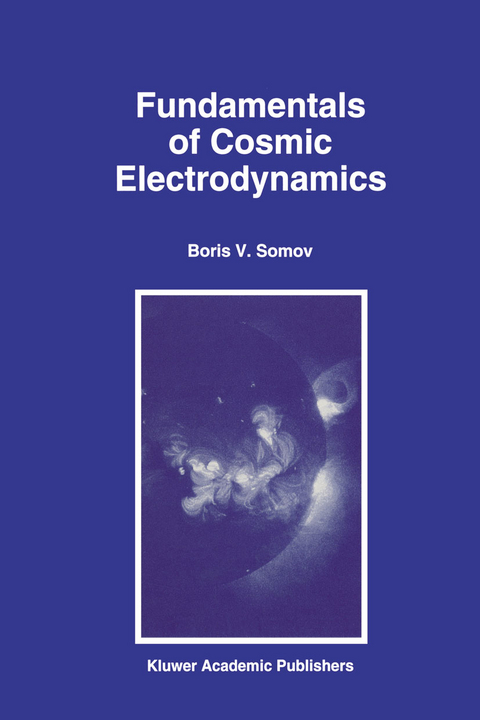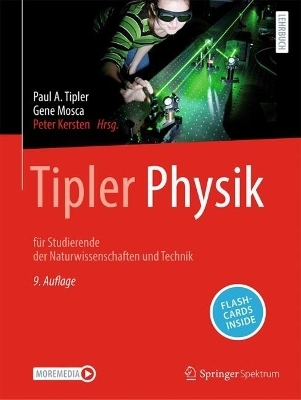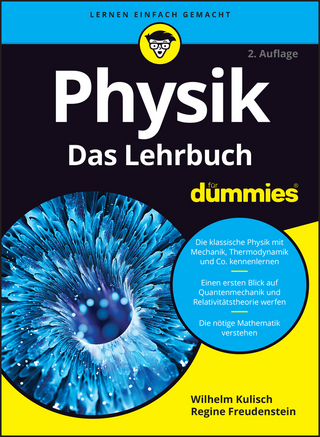
Fundamentals of Cosmic Electrodynamics
Springer (Verlag)
978-94-010-4517-9 (ISBN)
This textbook is written to be used at several different levels. It is aimed primarily at beginning graduate students who are assumed to have a knowledge of basic physics. Starting from the language of plasma physics, from Maxwell's equations, the author guides the reader into the more specialized concepts of cosmic electrodynamics.
The main attention in the book is paid to physics rather than maths. However, the clear mathematical image of physical processes in space plasma is presented and spelled out in the surrounding text. There is not another way to work in modern astrophysics at the quantitative level.
The book will also be useful for professional astronomers and for specialists, who investigate cosmic plasmas from space, as well as for everybody who is interested in modern astrophysics.
1 Charged Particles in the Electromagnetic Field.- 1.1 Initial equations and their properties.- 1.2 Liouville’s theorem and the exact distribution function.- 2 The Motion of a Charged Particle in Given Fields.- 2.1 A particle in constant homogeneous fields.- 2.2 Weakly inhomogeneous slowly changing fields.- 2.3 Adiabatic invariants.- 2.4 Reconnection and particle acceleration.- 3 Coulomb Collisions of Particles.- 3.1 Close and distant collisions.- 3.2 Debye shielding.- 3.3 Times of collisional relaxations.- 4 Statistical Description of a Plasma.- 4.1 The averaging of Liouville’s equation.- 4.2 Collisional integral and correlation functions.- 4.3 Equations for correlation functions.- 4.4 Approximations for binary collisions.- 4.5 Correlation function and Debye shielding.- 5 Hydrodynamic Description of a Plasma.- 5.1 Transition to macroscopic transfer equations.- 5.2 Hydrodynamic equations for plasma.- 5.3 Generalized Ohm’s law.- 6 Magnetohydrodynamics.- 6.1 Basic assumptions and the MHD equations.- 6.2 Magnetic flux conservation. Ideal MHD.- 6.3 The main approximations in ideal MHD.- 7 Plasma Flows in a Strong Magnetic Field.- 7.1 General formulation of the problem.- 7.2 The formalism of two-dimensional problems.- 7.3 On the existence of continuous flows.- 7.4 Plasma flows in the field of a time-dependent magnetic dipole.- 8 Waves and Discontinuous Flows in a MHD Medium.- 8.1 Small-amplitude waves.- 8.2 Discontinuity surfaces in hydrodynamics.- 8.3 Magnetohydrodynamic discontinuities.- 8.4 Continuous transitions between discontinuous solutions.- 9 Evolutionarity of MHD discontinuities.- 9.1 Conditions for evolutionarity.- 9.2 Consequences of evolutionarity conditions.- 10 Plasma Equilibrium in a Magnetic Field.- 10.1 The virial theorem in MHD.- 10.2 Force-freefields and Shafranov’s theorem.- 10.3 Properties of equilibrium configurations.- 10.4 Archimedean force in MHD.- 11 Stationary Plasma Flows in a Magnetic Field.- 11.1 Ideal plasma flows.- 11.2 Flows at small magnetic Reynolds numbers.- 11.3 Expulsion force and vortex flows.- 11.4 Expulsion force for large magnetic Reynolds numbers.- 12 Magnetic Reconnection in Current Sheets.- 12.1 Small perturbations near a neutral line.- 12.2 Field line deformation due to current displacement.- 12.3 Dynamic dissipation of a magnetic field.- 12.4 Particle acceleration into current sheets.- 12.5 Regular Versus Chaotic Acceleration.- 13 Evolutionarity of current sheets.- 13.1 Properties of reconnecting current sheets.- 13.2 Small perturbations outside the RCS.- 13.3 Small perturbations inside the RCS.- 13.4 Solution on the boundary of the RCS.- 13.5 Criterion of evolutionarity.- 14 Tearing Instability of the Reconnecting Current Sheet.- 14.1 Origin of tearing instability.- 14.2 Formulation of the problem and its analytic solution.- 14.3 Physical interpretation of the instability.- 14.4 Stabilizing effect of the transverse field.- 14.5 Compressibility and a longitudinal field.- 14.6 Kinetic approach.- 15 Selected Trends in Cosmic Electrodynamics.- 15.1 Reconnection and magnetic helicity.- 15.2 Reconnection in low-temperature plasma.- 16 Reconnection of Electric Currents.- 16.1 Models for flare energy storage and release.- 16.2 Current sheet formation mechanisms.- 16.3 Shear and reconnection of currents.- Appendix 1. Notation.- Appendix 2. Useful Expressions.- Appendix 3. Constants.
| Reihe/Serie | Astrophysics and Space Science Library ; 191 |
|---|---|
| Zusatzinfo | XII, 364 p. |
| Verlagsort | Dordrecht |
| Sprache | englisch |
| Maße | 155 x 235 mm |
| Themenwelt | Naturwissenschaften ► Physik / Astronomie ► Allgemeines / Lexika |
| Naturwissenschaften ► Physik / Astronomie ► Astronomie / Astrophysik | |
| Naturwissenschaften ► Physik / Astronomie ► Atom- / Kern- / Molekularphysik | |
| Naturwissenschaften ► Physik / Astronomie ► Theoretische Physik | |
| ISBN-10 | 94-010-4517-8 / 9401045178 |
| ISBN-13 | 978-94-010-4517-9 / 9789401045179 |
| Zustand | Neuware |
| Informationen gemäß Produktsicherheitsverordnung (GPSR) | |
| Haben Sie eine Frage zum Produkt? |
aus dem Bereich


